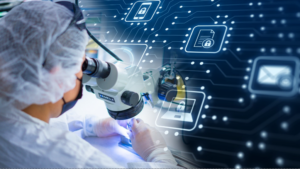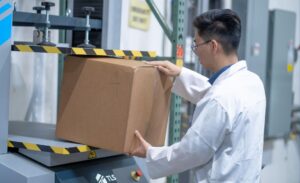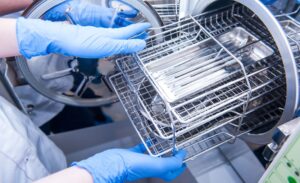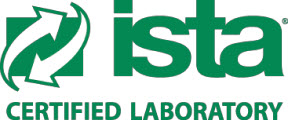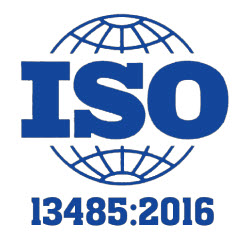Pus. Blood. Dirt. Foreign particles.
All these and more may be left behind on a medical device after medical procedures are complete. Definitely not what a healthcare professional wants to reuse, and most certainly not what a patient wants used on them!
Thankfully reusable medical devices go through a robust cleaning, decontamination, and sterilization process before being returned to circulation and use for the next patient. This prevents cross-contamination and microbial contamination.
Medical device cleaning and decontamination is critical for reusable medical devices before sterilization. All bioburden and contaminants must be effectively removed.
Levels of disinfection
There are specific levels of disinfection applicable to medical devices based on their clinical use. The appropriate disinfection level is typically based on the Spaulding classification scheme, which has three categories:1
Critical medical devices
Critical devices are those introduced directly into the blood stream or contact a normally sterile tissue or body space during use. Examples include: Surgical instruments, implantable devices, irrigation systems for sterile instruments in sterile tissues, endoscopes used in sterile body cavities, and all endoscope biopsy accessories.
Semi-critical medical devices
These are medical devices that contact intact mucous membranes or non-intact skin, without tissue penetration. Examples include: Endotracheal tubes, laryngoscope blades and other respiratory equipment, esophageal manometry probes, endo-cavity probes, tonometers, and bronchoscopes.
Non-critical medical devices
Non-critical devices are instruments or medical devices that only contact intact skin without tissue penetration. Examples include: Devices with no direct patient contact, including infusion pumps and ventilators, blood glucose meters, stethoscopes, and oximeters.
Medical device cleaning and decontamination
The first step for reusable medical devices is the cleaning aspect, which involves removal of visible and non-visible contaminants. This typically involves water and detergent. Blood, protein substances, and other debris are washed away.
The second step moves into decontamination. This step involves using liquid chemicals or cleaning agents to kill non-spore forming bacteria. Decontamination of medical devices can be achieved in six different ways using common disinfectants. These are:
- Sodium hypochlorite (bleach)
- Ethyl alcohol
- Isopropyl alcohol (70%)
- Alconox
- Liquinox
- Cidex (Glutaraldehyde)
You may wonder why there are six different disinfectant options. Each has a specific way of interacting with the medical device material, whether steel, plastic, or other. Another consideration is the type of contact it has with a patient, as well as the level of microbial decontamination required. Your specific manufactured medical device instructions for use (IFU) likely outlines the proper method of cleaning due in part to its material, construction, and how the device is used.
Let’s look at each of these to identify why and when they should be used for medical device decontamination.
- Sodium hypochlorite (bleach)
Sodium hypochlorite is successfully used to disinfect medical devices such as dental prosthesis, tonometers, and hydrotherapy tanks. - Ethyl alcohol
Ethyl alcohol has rapid bactericidal activity, low residue, does not stain surfaces, and can also serve as a drying agent. - Isopropyl alcohol (70%)
As with ethyl alcohol, isopropyl alcohol has rapid bactericidal activity, low residue, does not stain surfaces, and can serve as a drying agent. - Alconox
Alconox is ideal for cleaning contaminants from glassware, metals, plastics, ceramic, porcelain, rubber and fiberglass. It is a corrosion inhibited, residue-free formulation. - Liquinox
Liquinox is a concentrated, anionic detergent for manual and ultrasonic cleaning. It is known for reliable results without interfering residues. - Cidex (Glutaraldehyde)
Glutaraldehyde is a disinfectant, medication, preservative, and fixative. Cidex is a fast and effective way to disinfect and sterilize medical devices.
The right partner for your medical device cleaning and disinfecting
You have many options for your medical device product cleaning and disinfecting. Be sure to find a life science partner who offers flexibility, adheres to the latest standards and best practices, and supports their cleaning and disinfecting services with other service opportunities. A good long-term partner will have extended capabilities to support you through all your medical device needs.
Learn more about Life Science Outsourcing (LSO) Cleaning and Decontamination Services
LSO has several divisions to meet your needs, including:
References:
- Association for the Advancement of Medical Instrumentation (2018). Technical information report: AAMI TIR68: 2018. Accessed online 10/29/20. https://www.aami.org/docs/default-source/products_store/standards/tir68_1809.pdf?sfvrsn=af991ec1_2

